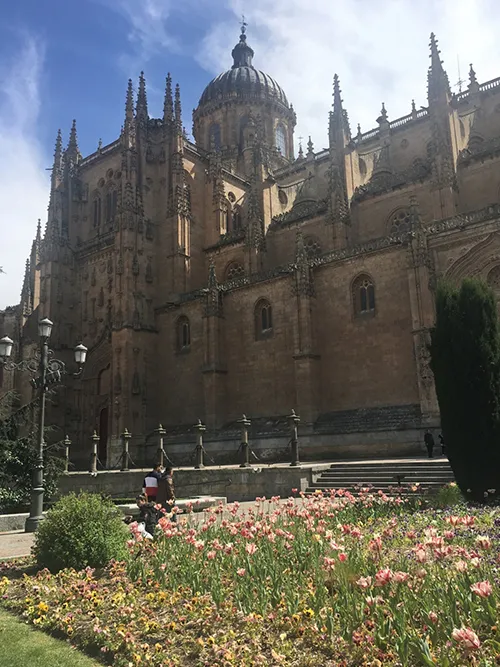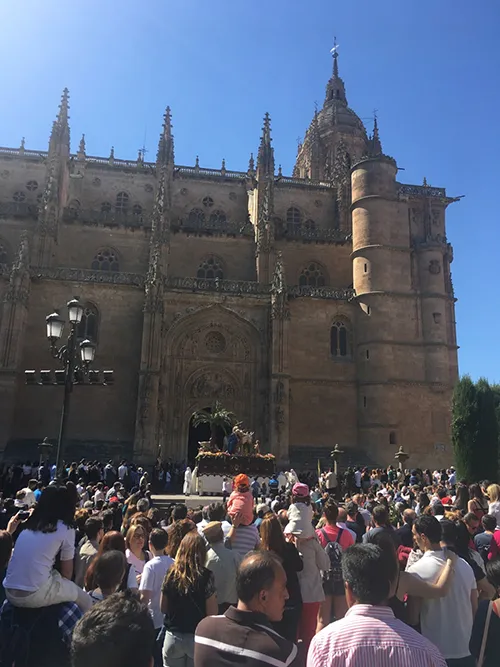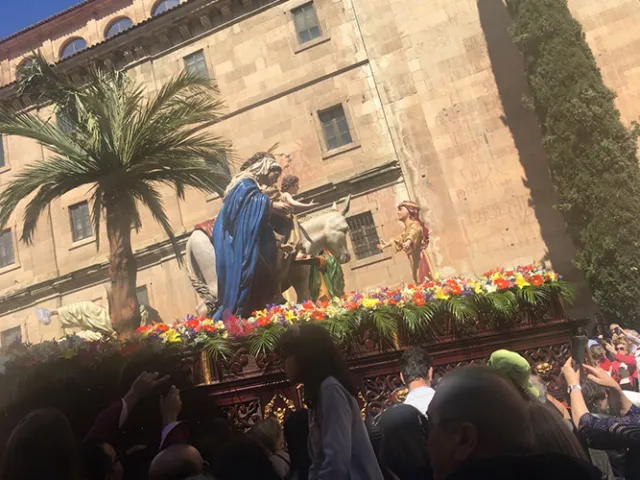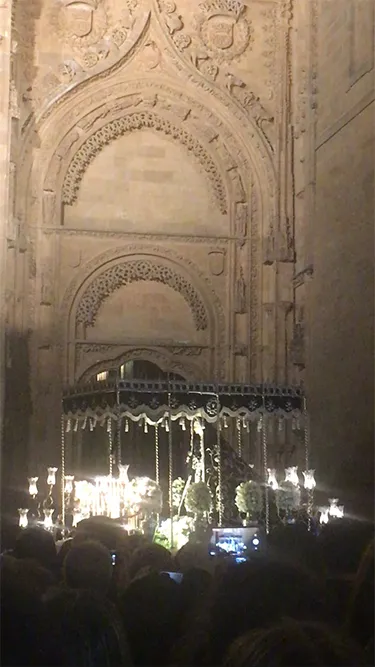2017 Activity Report
March Activity Report
March 2018
Global Japan Office Coordinator
Saki Ozawa
In March it rained, and even hailed, all month as if it was the middle of winter again. In the last third of the month, daylight savings began. As soon as daylight savings began, Spain became very spring-like with the sky staying bright during the evening, hinting at the coming summer.
On the 26th of March, students from Kanagawa Sohgoh High School visited the University of Salamanca and met with students majoring in Japanese for roughly two and a half hours.
This event was bustling with 60 students; 20 students from Kanagawa Sohgoh High School and 40 students ranging from first to third year from Salamanca.
At the event, the high school students gave presentations on Japan in Spanish. Presentations included a demonstration of ‘kagome kagome’, a popular children’s game, and proper karate form, which both received a round of applause from the audience. Many students know about things like martial arts and games, but it seems most of the Salamanca students had never seen them with their own eyes, so it was a good experience for them.
Our students also gave the guests a campus tour in Japanese. First, we split all the students into five groups, and let them break the ice and introduce themselves, then the groups toured the three buildings that surround the Plaza de Anaya, the philology department building. These three buildings are named ‘Palacio’, ‘Anallita’ and ‘Hospederia’. The students tried their best to guide the guests in Japanese using cue cards they prepared beforehand, and tried actively to rise to the challenge of communicating in Japanese. It seems like this was a good experience for the students, as their faces were beaming with accomplishment when they told me ‘I could talk a lot’, ‘I was able to explain everything’, and ‘they understood what I was saying’, which just goes to show how much the cue card preparation and Japanese practice helped out.
After this event, the students from Kanagawa Sohgoh High School danced the ‘soran bushi’ in front of the cathedral in the middle of the university grounds. Students from all over the university came to watch this performance, making it a great success.
I am very thankful for cultural exchanges such as these, as my students get to actually use their Japanese with Japanese people instead of learning at a desk. It also leaves all involved with good memories, a newfound confidence, and motivation to study harder.
From now on I want to continue working to create educational cultural exchange opportunities between high schools and universities, and to give more active support to students on exchange at Salamanca.
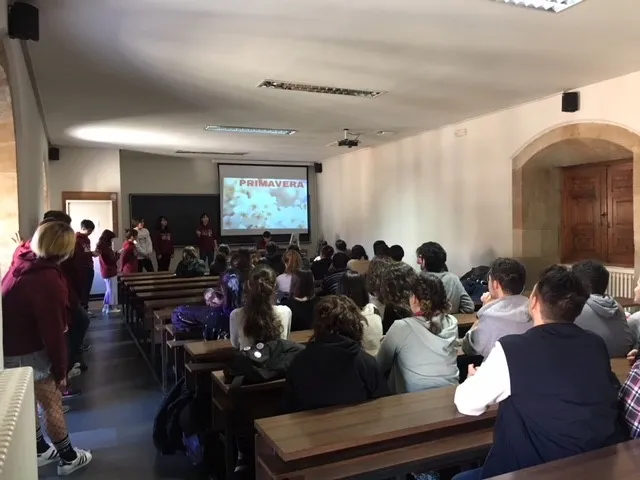
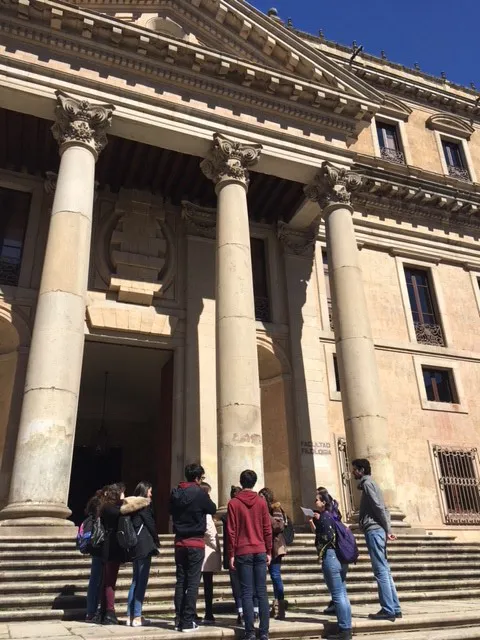
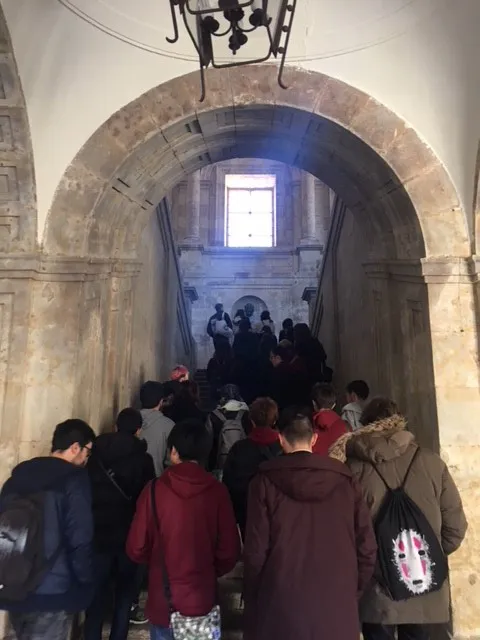
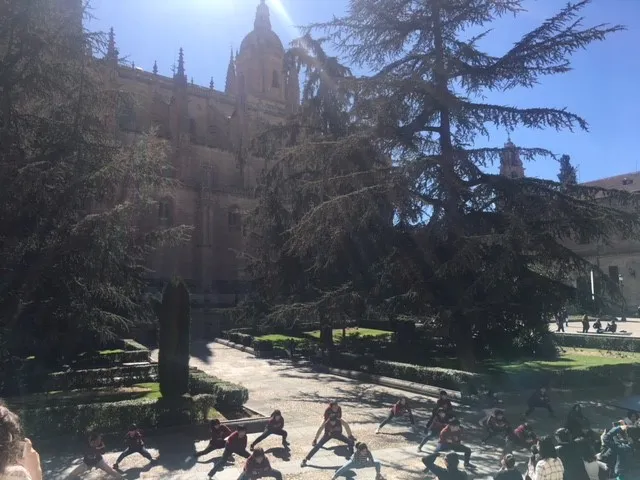
February Activity Report
February 2018
Global Japan Office Coordinator
Saki Ozawa
Two months have already passed since the New Year. This month, especially in the latter half, the weather has been really bad. There has been a lot of rain, much like the rainy season in Japan, so it’s been a strange month. Usually, people don’t carry umbrellas in Spain, and so every now and then I saw people walking in the rain, soaking wet with their hoods up. Even at the end of February, there was enough snow falling for children to have snow fights in little side streets, and in that cold weather I started really looking forward to spring.
This month, I participated in the general meeting of the Association of Japanese Language Teachers in Spain, and the kanji class at the Autonomous University of Madrid (UAM).
Accompanying the general meeting of the Association of Japanese Language Teachers in Spain, Professor Hiroyuki Sasahara of Waseda University was welcomed to Spain to hold a mock kanji class at UAM.
Over ten students from UAM participated in the mock kanji class, and were very enthusiastic. The content of the class was designed to be fun even for Japanese people, and included a discussion on the meaning of the kanji ‘嬲’ (‘naburu’), and a ‘kanji hieroglyph relay game’ designed by the professor. Through the professor’s demonstration of parodic ways of writing ‘Waseda University’ and ‘Keio University’, the students were able to see specific example of the diverse nature of the Japanese writing systems, and seemed particularly interested in the diverse ways of forming kanji, hiragana, katakana and the alphabet.
The following day, at the general meeting of the Association of Japanese Language Teachers in Spain, the current chairman’s term of office came to an end, and so a new chairman was chosen. At the same time, the structure of the executives was changed around, and a few young executives were elected, showing that the association is not based on ‘seniority by length of service’, and is trying to grow in a new, modern way, but still keep the atmosphere it is known for. I want to cheer on these new executives that are the same age as me.
After the general meeting, I of course attended Professor Sasahara’s lecture, and played the kanji hieroglyph relay game (in which we matched hiragana with kanji and kanji with hiragana) with other Japanese participants, through which we deepened our understanding of kanji. Moreover, the professor talked about how it is not important to worry about stroke order, the direction of flicks, and oddly similar kanji (such as吉/��) and hiragana, but rather to focus on teaching with an open mind. It was a lecture that may have hurt the ears of some teachers present, but I was really glad I participated, and I hope to apply some of what I learnt to my own classes.
Immediately, I applied what I learnt to my own little lecture on the structure and usage of kanji radicals, and the students seemed to react very positively to it. I felt the significance of making classes on points that students really want to know, and I hope to continue my studies so I can continue to be inspired, while also inspiring my students.
In other news, the second semester began at the start of February. This semester lasts for 15 weeks until the examination preparation period in mid-May. The language classes are a bit different to the general TUFS and Japanese education standard, with each subject having two classes and a total of 4 hours of class time each week. Since you can hold a total of 26 classes per subject each semester, in this time I want to not only cover the topics that must be covered, but to also be a teacher who can nurture each student to make small realizations, become motivated and develop aspirations in their language learning – I feel like I’ve gained a newfound confidence.
This semester, I’m only in charge of students who I’ve already taught before, so we already have a relationship which is better than starting from zero. Because of this, I want to try my best to design lessons that fit the aspirations of each class.
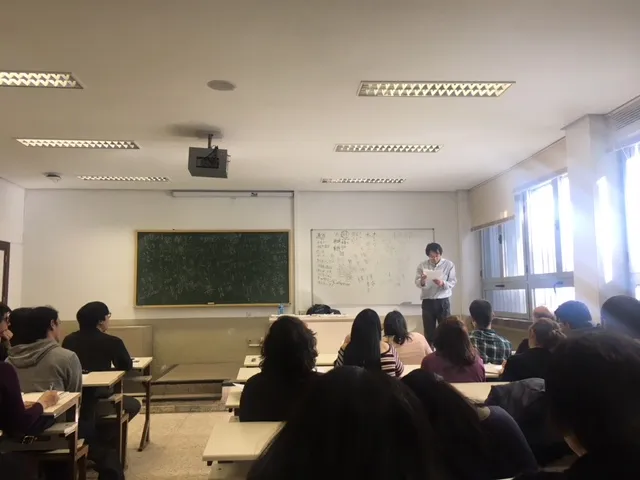
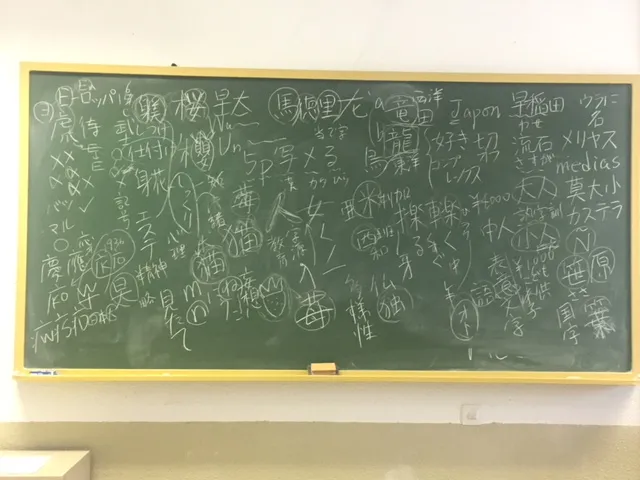
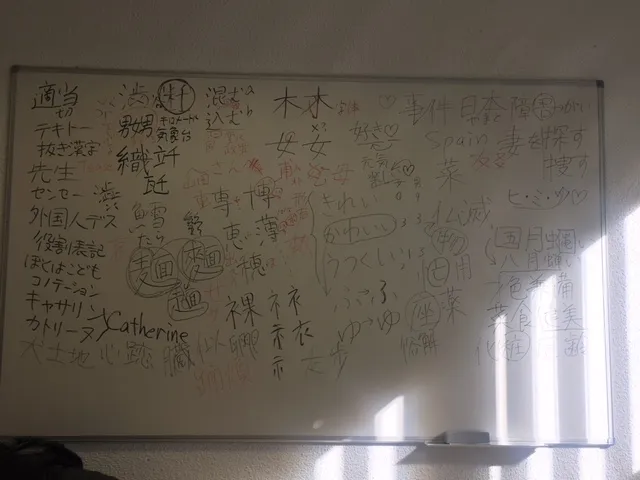
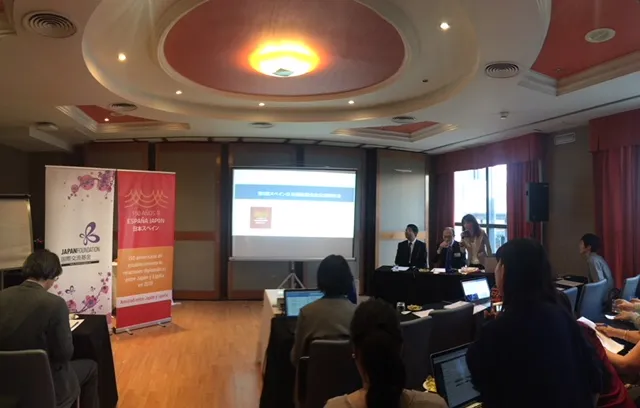
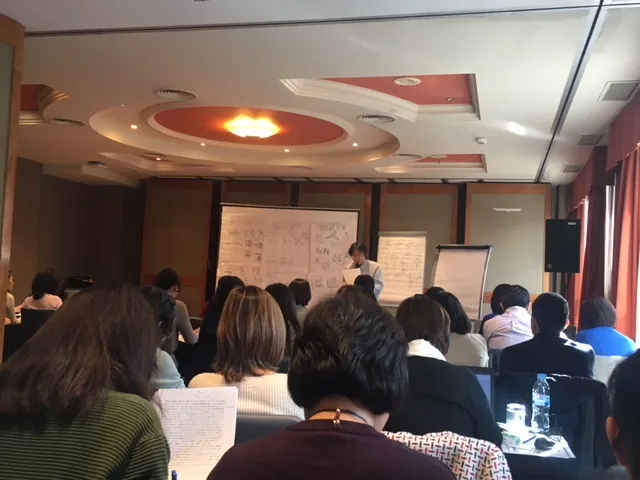
January Activity Report
January 2018
Global Japan Office Coordinator
Saki Ozawa
Happy New Year!
¡Feliz Año Nuevo!
Salamanca has also entered into a new year. Christmas in Spain lasts until a day called ‘Reyes Magos’ which falls on January 6th. This day, which is the day of the three wise men, is the main event of a Spanish Christmas. Why is this day the main event? Well it is mostly due to religious reasons, but also because this is the day that children receive their Christmas presents!
Children in Spain wait for this day, and are on their best behavior throughout the Christmas period. This is because they believe that, if they are good, the three wise men will bring them presents on the last day of Christmas. In other words, in the Christmas known in Japan, Santa brings children presents on the morning of the 25th of December, but in Spanish Christmas, the children wait until the morning of January 6th for the three wise men to come with their presents. Because of this, the department stores and stores that usually close right on closing time stay open until midnight, which is very rare for Spain.
In recent years, due to globalization, families that exchange gifts on the 25th of December have increased, but the custom is still going strong, giving Spanish Christmas a very unique feeling to it.
As per every year, the university’s examination period begins in mid-January. University students study hard in preparation for this period, even over Christmas.
Here at the University of Salamanca, an intensive examination period is held until the end of January, results are released in the beginning of February, and the new semester begins without a break on the following Monday. It is a hard schedule on the students, who don’t have time to catch a breath after exams, but I still hope they will sink their teeth into their new classes this semester without losing focus.
On January 18th, an opening ceremony for an exhibition, ‘Japanese Design Today – 100 Examples’, was held at the Spanish-Japanese Cultural Center. The opening ceremony held in the Center’s Empress Michiko Hall was attended by many from the University of Salamanca, including the new president Professor Ricardo Rivero, the head of the Spanish-Japanese Cultural Center, and Chief Yoshida of the Madrid branch of the Japan Foundation. On the day of the ceremony, it was hard to move around the venue as so many people turned up, but I still looked at the 100 examples at my own pace. The exhibition was very impressive, featuring real bicycles, detailed wooden Buddha statues, furniture designed by regional factories, nostalgic appliances, recent designs from magazines, and even designs by ISSEY MIYAKE. It was obvious that the event was attracting much attention as, on top of the students of the center, the event was also attended by Japanese major students, despite it being in the middle of the exam period.
In other news, it seems that the new system developed by the new president (mentioned above) and the vice president has finally been put into effect over the new year. I hope that the piled up messages I have will go through smoothly.
Next month, since we are entering the new semester straight away, I hope to give plenty of learning opportunities to both students and teachers, while also focusing on goals set following the previous semester, so we can have a good start to the new semester.
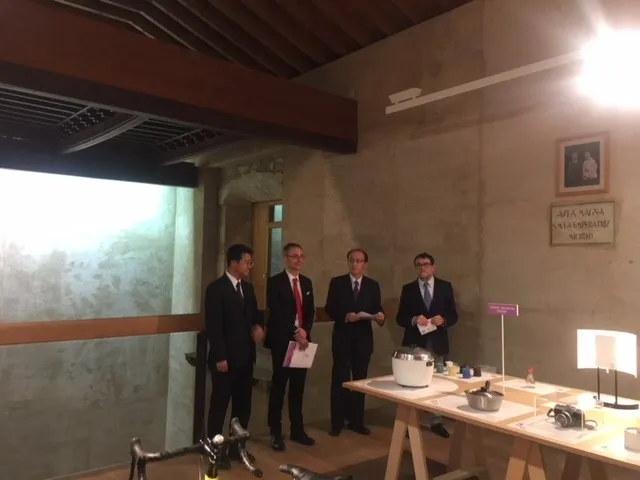
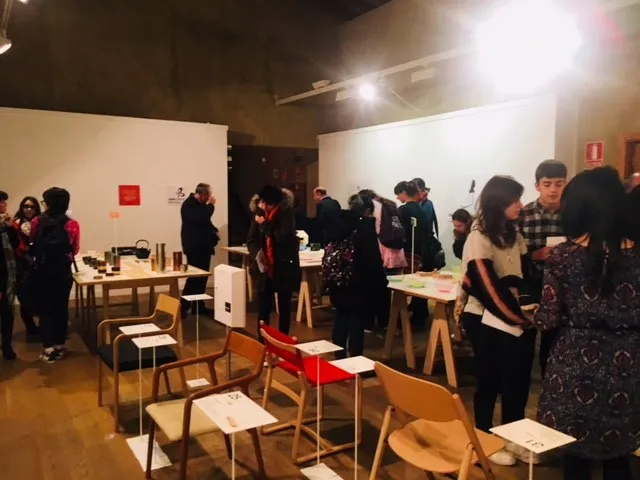
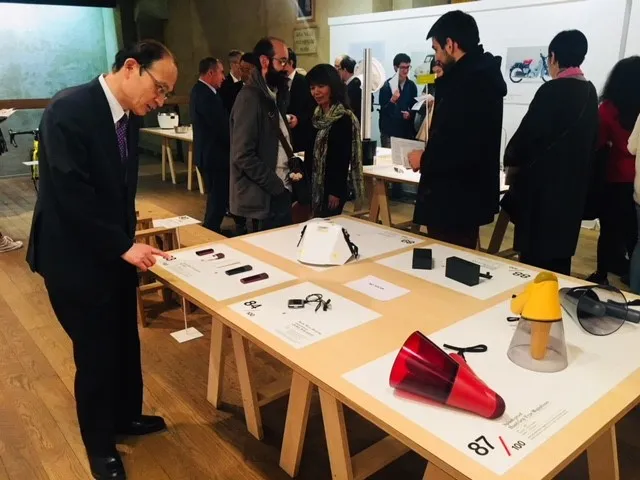
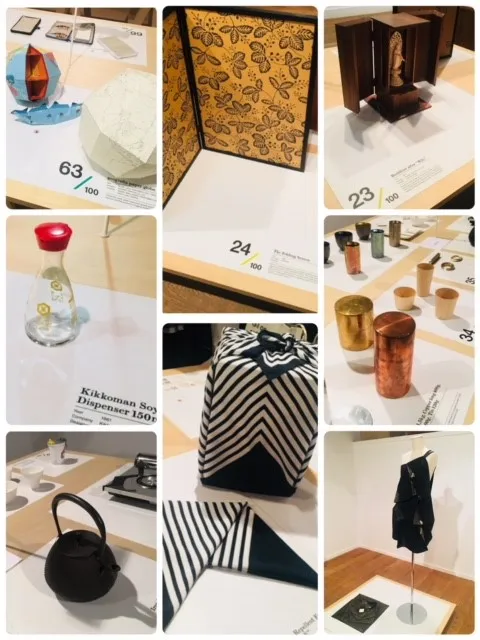
December Activity Report
December 2017
Global Japan Office Coordinator
Saki Ozawa
December is here in Salamanca once again, and the entire city is flooded with Christmas colors. As in the previous year, there are decorative lights along the roadside arcades, huge Christmas light displays at Plaza Mayor, but this year there is also a Christmas market held at Plaza de Anaya, which further heightens the merry atmosphere.
December has been an important month for students as well, not only for Christmas, but also because it is the last month of the semester.
In our class, we have made it a goal to take a slight detour from our textbook by watching TV commercials and trying out various songs and tongue-twisters. In the end we sang Jingle Bells, and looked back on this summer when we had just started learning Japanese, practicing each character in the hiragana and katakana syllabaries. Students seemed filled with deep emotion as they reflected on the tough Japanese intensive training they had gone through.
End of term exams are held after New Year’s, but as in the previous years, since many students are enrolled in the Japanese classes, it is difficult to carry out the written exams and oral exams simultaneously. So, also as in previous years, we carried out the oral exams prior to the New Year. It made me proud to see that the students had practiced and put in a lot of effort before taking the oral test. It filled me with renewed enthusiasm to keep supporting them as best as I could.
Aside from this, this term I am responsible not only for classes geared towards students majoring in Japanese, but also for classes geared towards students taking Japanese as an elective. There are also exchange students enrolled in these classes; this means that I must make changes to the exams according to the deadlines established by their respective universities for submitting grades.
Also during this month we took an inventory of books given to us last year by TUFS, which are kept in our university library, the GJO, and the Hispano-Japanese Cultural Center. We have received a great number of books and it seems to be taking some time to process them, but for students in Salamanca, where books written in Japanese are rare, these are very rare and important books. I hope the opportunity to read these books will spurn them to improve on their reading abilities in Japanese.
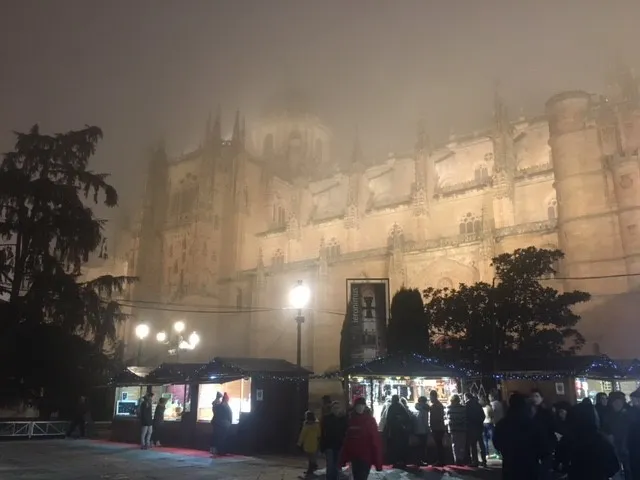

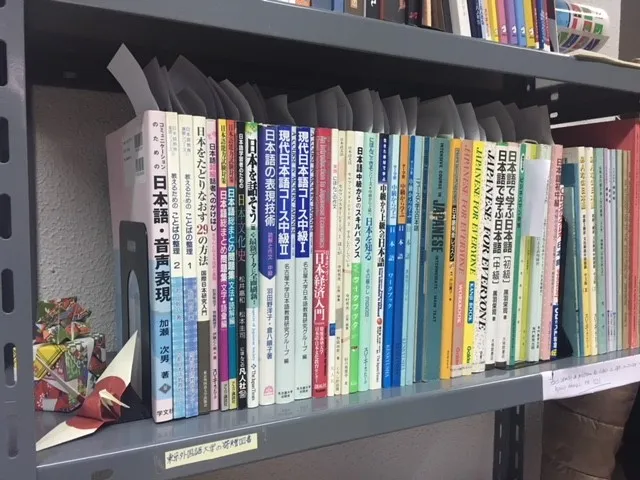
November Activity Report
November 2017
Global Japan Office Coordinator
Saki Ozawa
The onset of winter is fast approaching, as the number of days where the low temperature for that day dips to below zero degree centigrade increases. This year’s autumn and winter seems to be colder than last year’s, and everyone comes to school shivering from the cold.
On the 3rd of November, a consultation conference for studying abroad was held for students of our university, and the GJO also participated. The head of the international exchange division, as well as Monica, who works in the same division and who has helped many students attend study abroad programs in Japan, described the programs, deadlines, and conditions regarding studying abroad programs in Japan, China, and Korea.
The conference was attended by students who listened very keenly; this included not only students majoring in Japanese, but also students who majored in other languages but were now also studying Japanese. With application deadlines just around the corner, the students seemed quite motivated, asking questions and informing themselves of the universities they wish to apply to. While students majoring in Chinese have only one university in Taiwan they can apply to, students majoring in Japanese can apply to many universities, so the number of possible exchange programs one could apply to is affected by one’s choice of language to major in. With this in mind, the presentation attempted to provide an over-arching explanation of the various exchange programs available within the three aforementioned countries; attention was also given to the possibility of studying abroad in a country where the language one majors in is not spoken. It seems this was also an opportunity for freshman students, whose immediate tasks do not concern studying abroad, to broaden their perspectives on the subject.
The application period for study abroad programs ended in the middle of November, and students who have been accepted into programs start preparing themselves for studying abroad early the following year. There are a number of students who made TUFS their first choice since it became an option for exchange programs, and I hope that many students can take advantage of the opportunity for studying abroad this year as well.
Elections for the president of Salamanca University were held this month, and after two elections, a new president and vice president were chosen from among four candidates.
Until the new president’s administration is brought into place, each department is momentarily frozen as new appointments are made; once the new year starts the work of each department will be restarted in earnest.
Meanwhile, with more than half of the semester over, the students who had seemed to be taking their studies easy on account of the new semester, now seem anxious about exams after winter vacation and the final grades as the end of the semester approaches. Students at the University of Salamanca seem academically oriented, and are increasingly raising questions about how scores from each class activity figures into the final grades. I am reminded that this is perennially a tough part of the year.
The freshmen, cheerful and eager to learn, show significant interest in activities that go beyond the textbook. In the Practical Japanese classes they try out tongue twisters and sing various songs and enjoy Japanese to a great extent. I wish that while actively going outside of the textbook and enjoying and getting a taste of many expressions, they would also reflect on what they learned so far in preparation for the finals.
We teachers would like to do our best to make the next month a brush-up month for all, so that freshmen, in preparation for their first final exams, and sophomores and juniors in reviewing their accumulated knowledge and mistakes, can spend a meaningful winter vacation in terms of their studies.
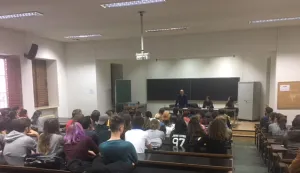
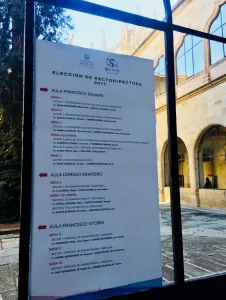
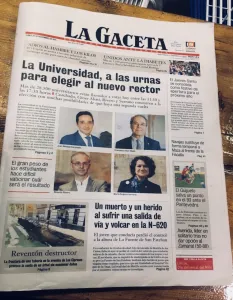
October Activity Report
October 2017
Global Japan Office Coordinator
Saki Ozawa
It’s been a month and a half since the new semester began, and it feels like half of this semester is over already.
Daylight Savings ended on the last Sunday of October here in Spain, and I can feel the looming winter.
The change in temperature in the morning and evening is extreme, and sometimes there is more than 20 degrees of difference, so it is hard to decide what to wear this time of year.
In October, students got used to their new classes, and started delving into their studies, and the teachers are feeling like their classes are finally back on track.
On the 25th of this month, we received Kenji Hirata and Tokyo Gaigokai Executive Secretary, Masami Shimokoshi, of the Japanese Embassy in Spain at the Japanese department office of the University of Salamanca. Since next year is the 150 year anniversary of Japan-Spain diplomatic relations, we held a meeting to discuss promotion of exchange opportunities between Japanese and Spanish universities.
The meeting was also attended by the University of Salamanca’s Professor Alfonso Falero, and Professor Masako Kubo (who attended from part way through the meeting), and discussion revolved around demand for and the current state of exchange opportunities here at Salamanca.
On the following 26th there was a lecture on ‘Essential Literary Exchanges between Japanese diplomats and Lorca’ by Sophia University Emeritus Professor Shimizu, at which I greeted the professor on behalf of the philology department, and then listened carefully to his lecture. Because the lecture was given in Spanish, I could see some first-year Japanese major students, Japanese major masters students, and exchange students studying Japanese in attendance, many of whom told me of their interest in this lecture.
Next month is the deadline for exchange applications, so inquiries from students have started to come to me.
Continuing into November, I hope to keep supporting all my students.
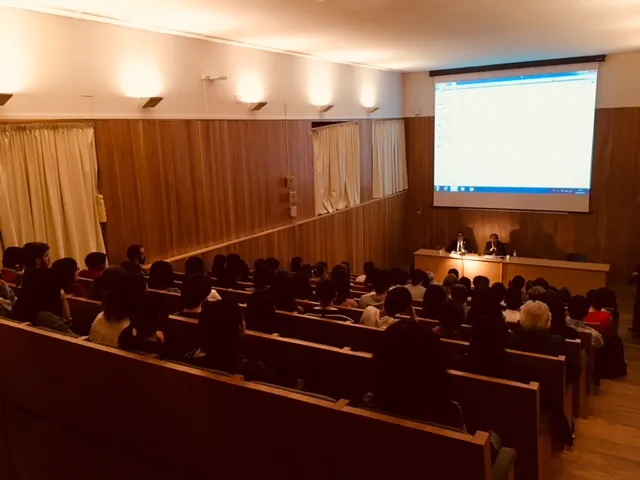
September Activity Report
September 2017
Global Japan Office Coordinator
Saki Ozawa
The new semester has also begun here at the University of Salamanca. This year marks the 800th anniversary of the universities establishment, and marks the start of further endeavors.
At 5pm on Monday 18th September, the entrance ceremony for the philology department was held. Being able to meet all the new philology department students at once, the teachers and university staff could be heard giving them words of encouragement.
The dean talked about how the philology department has been around for 800 years, since the very establishment of the University of Salamanca, and encouraged students to be glad that they chose the philology department. The dean also encouraged students to study hard, do activities outside of their studies, act independently, and enjoy student life.
From 6pm, guidance sessions were held for each major, and so the students majoring in East Asian Studies moved to another room for this session.
The East Asian Studies major guidance session covered the structure and professors of the course, shared an outline of the course, and answered questions, preparing the students for the new semester.
The new students this year are very motivated, which helps invigorate the teachers.
Continuing in this year’s first-year classes, we hope to focus on not only language aspects, but to also focus on the cultural aspects of Japan, while also helping students form a foundation for their Japanese learning by putting moderate focus on listening ability, reading comprehension, and cultural understanding. I aim to try my best to guide these wide-eyed new students.
Also, a new teacher has also joined the GJO, so I would like to cooperate with them to provide further support for students.
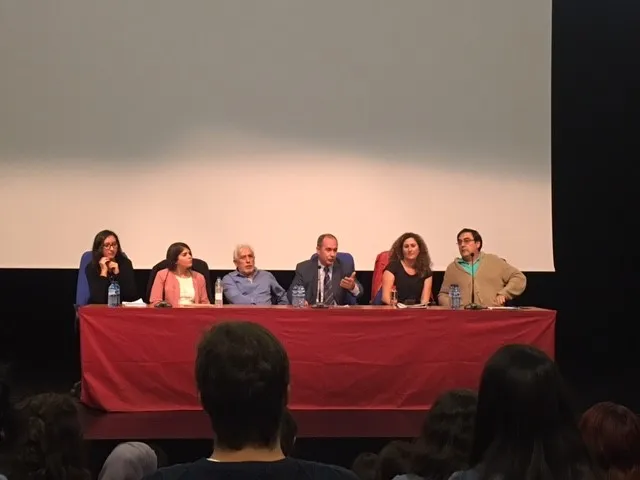
June Activity Report
June 2017
Global Japan Office Coordinator
Saki Ozawa
This year’s Salamanca, since June, has been experiencing strange weather, with extremely hot days registering at 37 degrees, followed by cold 14 degree days, making it very difficult to stay healthy. After days of short-sleeves or no-sleeves come days where we have to wear winter coats, which was not expected at all, surprising even the Spanish teachers.
June is the examination period here at the University of Salamanca. As I wrote in last month’s journal, the University of Salamanca has a makeup examination system, where you can sit an examination a second time if you fail. While this system is completely different to Japan’s, it is interesting to note that the makeup examinations for the first and second semester are all held at the end of the school year after the second semester’s examination period, so many students and professors call it the ‘exam festival.’ On top of these exams, students also visit their professor’s offices to ask about examinations already sat for revision, making for a very busy period.
This ‘exam festival’ lasted from the latter half of May until the end of June and, since it was the first time I had to prepare makeup examinations, proved to be a month that helped me fully realise the differences between the Japanese and Spanish examination systems.
This month, we asked for advice from our new GJO student interns (the first at our office) on events that would make Spanish students more interested in Japan. The interns shared opinions and suggested ideas that we, as Japanese people, do not necessarily think of, which were very interesting for us to hear, and now we are very excitedly working on a plan. We are currently aiming to be able to hold an event around September when the new students arrive.
In other news, on the 23rd and 24th of this month, the 4th ‘Spain Japanese Teacher’s Association’ Symposium was held here at the University of Salamanca. Also known as APJE (Asociación de Profesores de Japonés en España), their symposium is held once every two years. We did a presentation on curriculum creation that happened alongside the creation of the philology department here at The University of Salamanca. My predecessor, Kumiko Moriya, also participated, and I think it was a very good opportunity for teachers to encourage and motivate each other. From listening to presentations by other teachers, I was able to gain some inspiration for the next ‘Grado’ class, which has recently become bigger, so it was a very valuable experience.
From next year, ‘Grado’ will accept more students from more year levels, and in order to meet their goals I intend to work hard together with the other teachers.
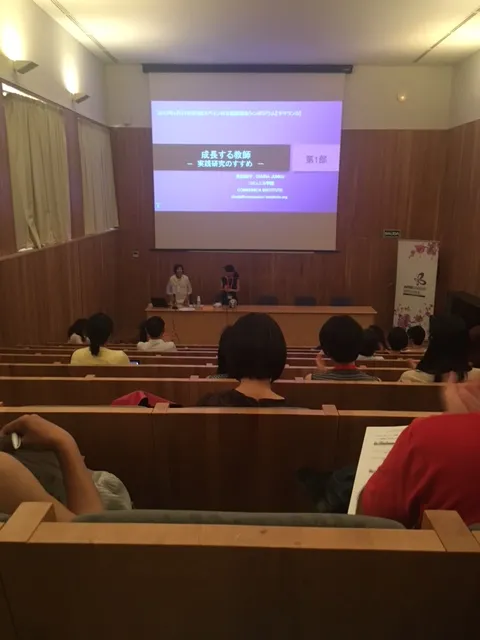
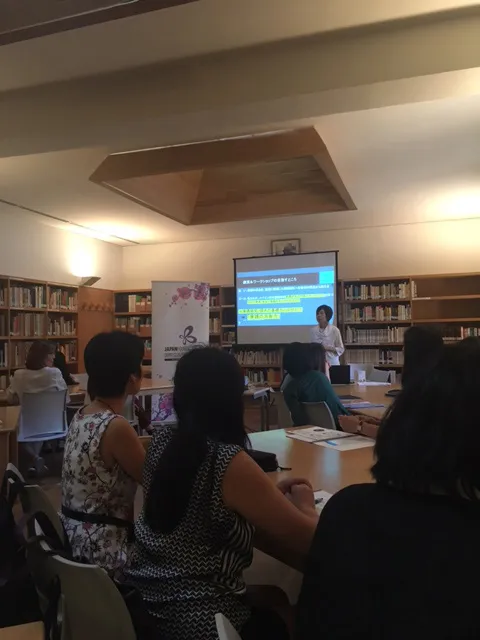
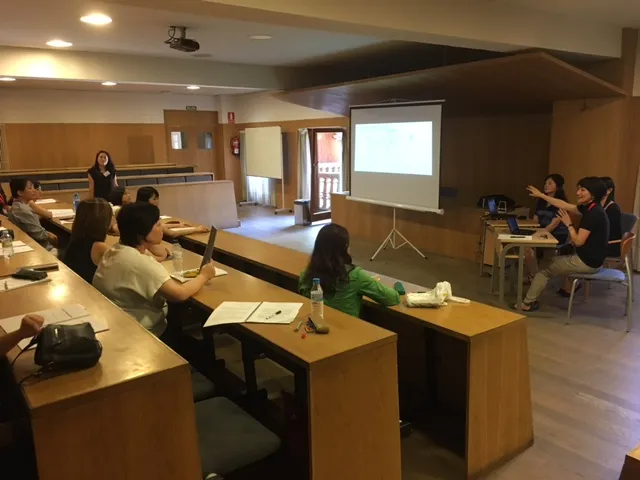
May Activity Report
May 2017
Global Japan Office Coordinator
Saki Ozawa
Once it turned May in Salamanca, we could just about get by in short sleeves, and we could feel the end of the long winter.
The first week of May was the University of Salamanca Literature Department’s East Asian Culture Week. In Salamanca, aside from the literature department, there are organisations such as the Spanish-Japanese Centre and graduate school sociology departments that have connections to Japan, but this Asia Week was held independently by the literature department. This is the second year since the department opened, and the event was being held for the first time. The literature department’s Asia Week was held due to demand from the students and was organised mainly by students, and so this year we saw the fruits of their endeavours for the first time.
Under the guidance of their teachers, the students of Japanese made sushi rolls, performed a song of their choice (‘Tsubasa o Kudasai’), and presented the various things they had worked so hard practicing. In particular, I was very moved by the Japanese production of ‘Momo Taro’, which was mainly by first year students, who despite having little experience of Japanese and being few in number managed to pull off everything including props, scenery, directing, and costumes.
Gathering in their own flats in the evenings to make sushi, putting their own effort into language plays with costumes, makeup, props and scenery, having experiences of Asian traditional dress… It reminded of me of Gaigosai, and I felt nostalgic about TUFS.
More than anything, I was very moved by how despite the fact that I only helped them with going out to buy ingredients for sushi rolls and demonstrating how to make them; choosing the play; and by watching them practice of songs and plays, the students managed to recreate the scenery of an old Japanese house, a peach, and a river using props and scenery, as well as doing costumes and makeup.
I think that for the students as well, the things they accomplished and the unions they formed together as students will all surely become good memories which will spur them on in their study of Japanese and their additional language subjects from here on.
This month also brought the end of term, and so school affairs and tasks associated with exams became our main focus. There are makeup exams at the University of Salamanca, so even if students don’t pass the first time they can take the exam again. The makeup exams for the first and second terms all take place after the end of the second term exams, so for both students and teachers the end of term is like an exam extravaganza. This ‘exam extravaganza’ fills up over a month from the end of May through June. After finishing this, the students are suddenly free to begin the summer holiday. I have a lot of other lessons that I’m responsible for, so I’m almost overwhelmed by the first term exams, second term exams, and first and second term makeup exams.
As for the plans for students related to Japan, we are currently making preparations in order to begin activities from the first term of next year. I am looking forward to opening a place in Salamanca where I can take part in the spread information about Japan next year.
Also, we are continuing with the creation of a curriculum for next year. In addition, with regard to consultations, up to now I have accumulated them in a file, and in order to use them effectively I have created a record form. With the method up to now, with follow-up consultations we haven’t been able to look back at previous consultations, so it has been inefficient. By organizing the content of consultations by filling record sheets, including making the consultations with students easier, I think they will be particularly useful for follow-up consultations. Also, since we will create records for each student for first and follow-up consultations, I think they will also be useful for analysing trends in the consultations.
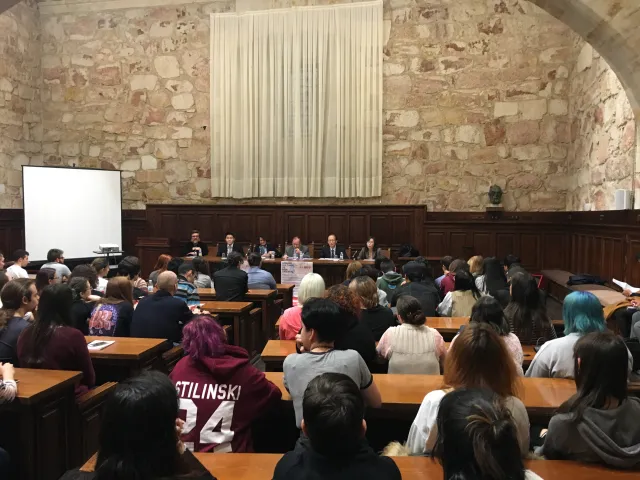
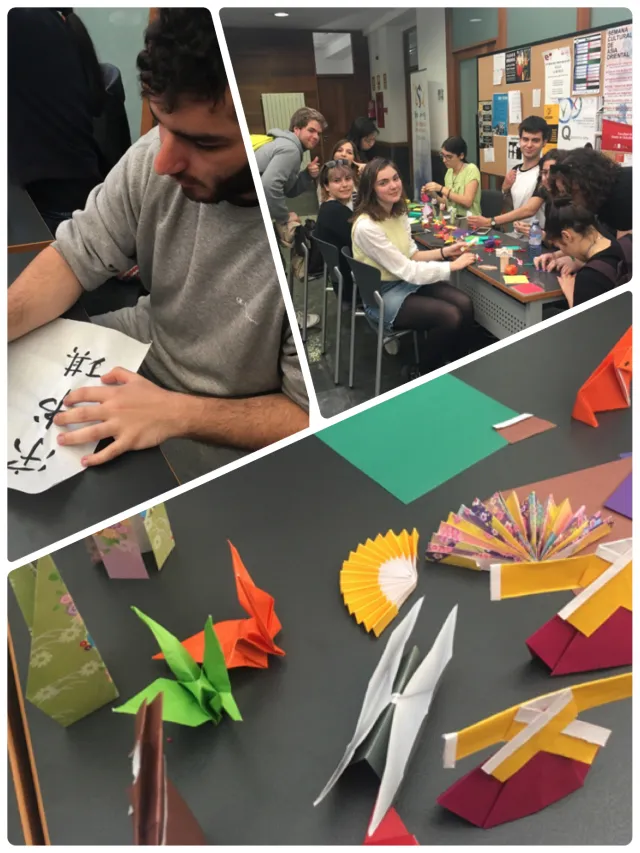
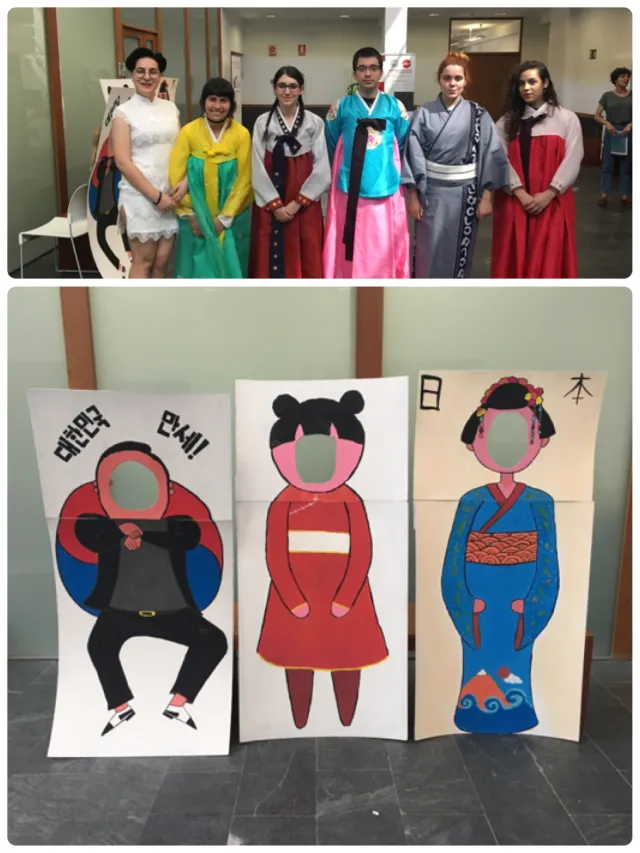
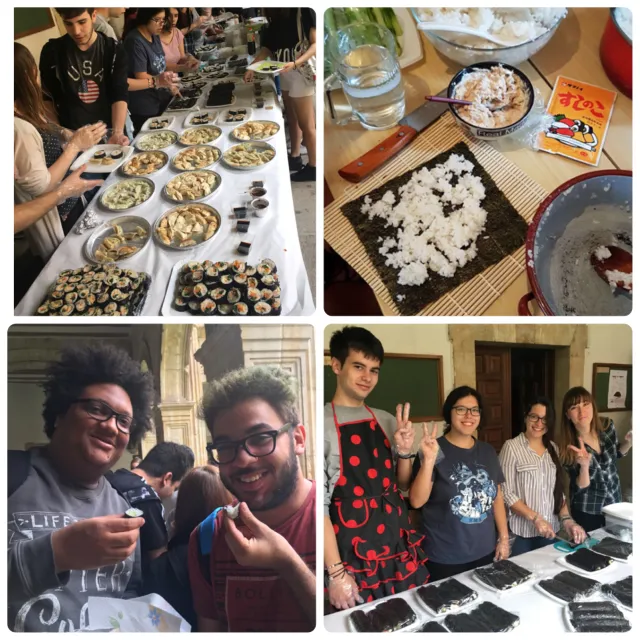
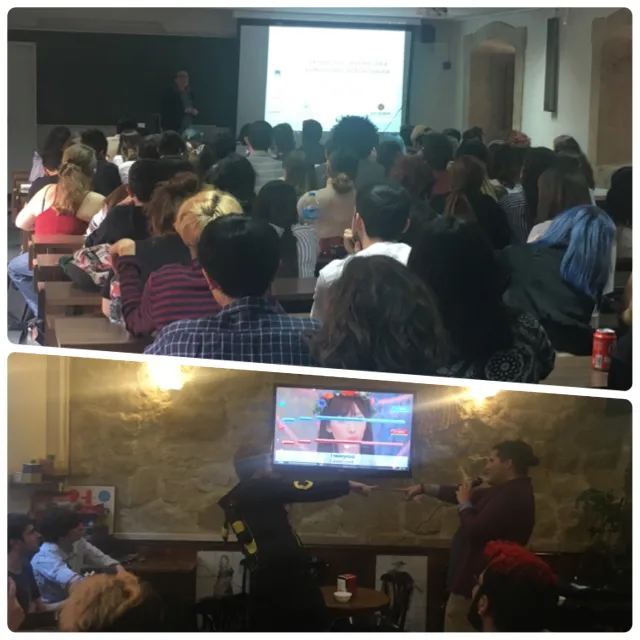
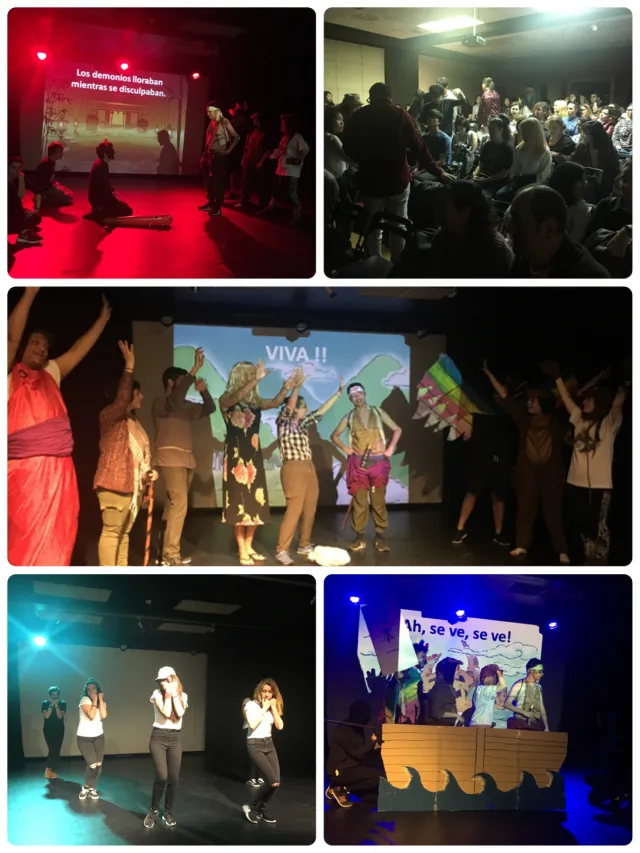
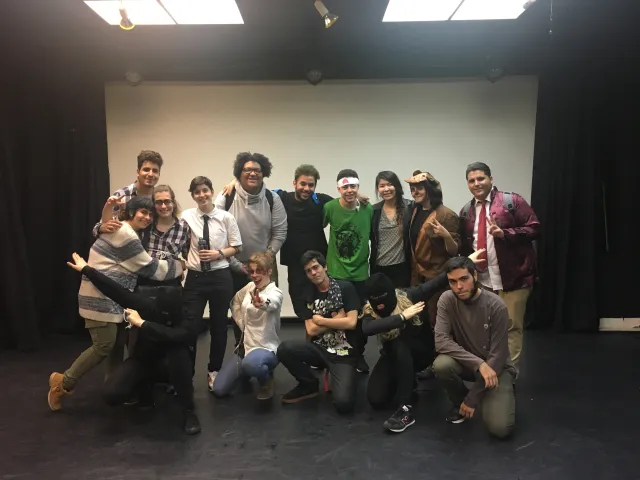
April Activity Report
April 2017
Global Japan Office Coordinator
Saki Ozawa
In April in Salamanca, we welcomed Easter.
In the town of Salamanca, which is built around the Catholic cathedral, the Easter occurs in Semana Santa (Holy Week), and is a very important festival. The universities close for the holiday, and floats a bit like portable shrines depicting Jesus, Mary, and angels among others called ‘pasos’ are paraded through the town day and night throughout Semana Santa. These pasos, which look like floats, actually have people inside them. It’s such hard work that it almost makes their shoulders bleed, and so because people lower them several times to take a break, the parade with the pasos advances very slowly. Also, among the many people who join the parade, there are people in cone-shaped hats called the ‘Nazareno’ who gather the procession at important points.
The parade of the paso that people carry in spite of the pain, the Narazeno, and the people of many various different groups, are spurred on by the rousing music of a brass band.
It seems that in most years, Semana Santa in Salamanca is wet and very cold, but this year we were blessed with good weather. With the parade of people carrying palm leaves on Palm Sunday, as well as the dignified procession of the paso of Mary on the eve of the festival, it was a Semana Santa that would move even those who aren’t Christians.
This month was the middle of the school term, and school affairs became the main task at hand. Being in the middle of making plans related to Japan that focus in students, I continued to hold meetings and discussions for them. In Salamanca, there are groups related to Japan in university departments and at the Spanish-Japanese Centre, so the aim is to form connections with these people. In addition, we are continuing work on the curriculum for next year.
In the first week on May, as we are approaching Asian Culture Week, we are making preparations.There are three weeks related to Japan in Salamanca, with the Spanish-Japanese Centre’s Japan Week, the literature department’s Asian Culture Week, and the social sciences department’s Asian Week. The literature department’s Asian culture week is being held for the first time this year, and since it was called for by the students, it is being planned with a focus on students.
The literature department’s Asian culture week will include students performing songs and plays in their languages of study and Asian foods among other things, and the students of Japanese will also volunteer their pieces.
This month has been mostly about giving guidance and advice on Japanese songs, plays and cuisine that the students will carry out. In the event of vacancies, the teaching staff also join in the rehearsals by taking on the role of a dog (!), and sensing how close the students were to being grown up while taking part was a happy feeling.
This year will be the first ever Asian Culture Week of the literature department, and will be a culture week focusing on students. After seeing how it goes this time I hope to think about whether there will be anything that the GJO can contribute to Asian Culture Week in following years.
I will look forward to giving more details in the next activity report, and since you can see how much effort the students of each language are putting in to their preparation, I am very much looking forward to the event.
